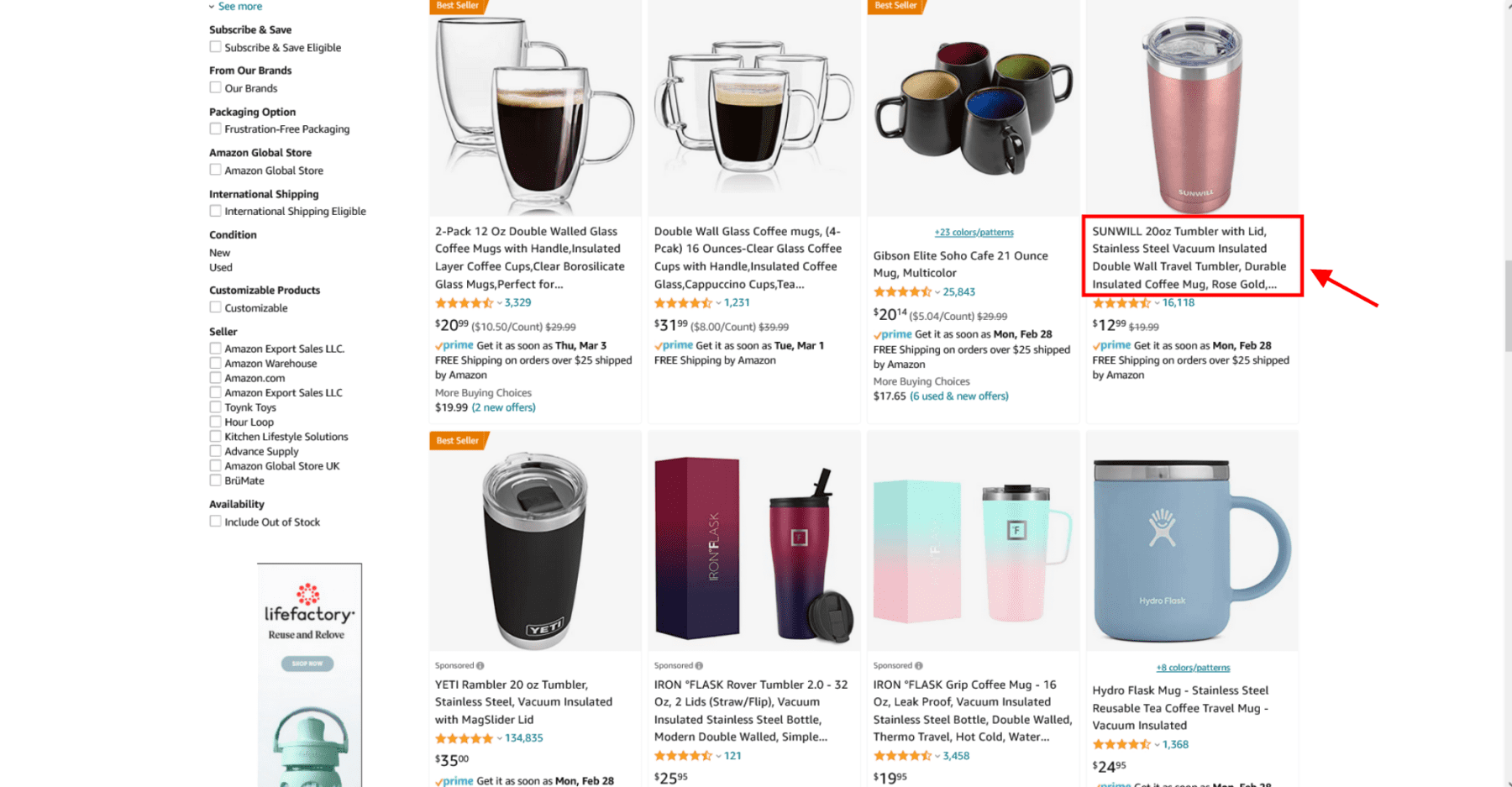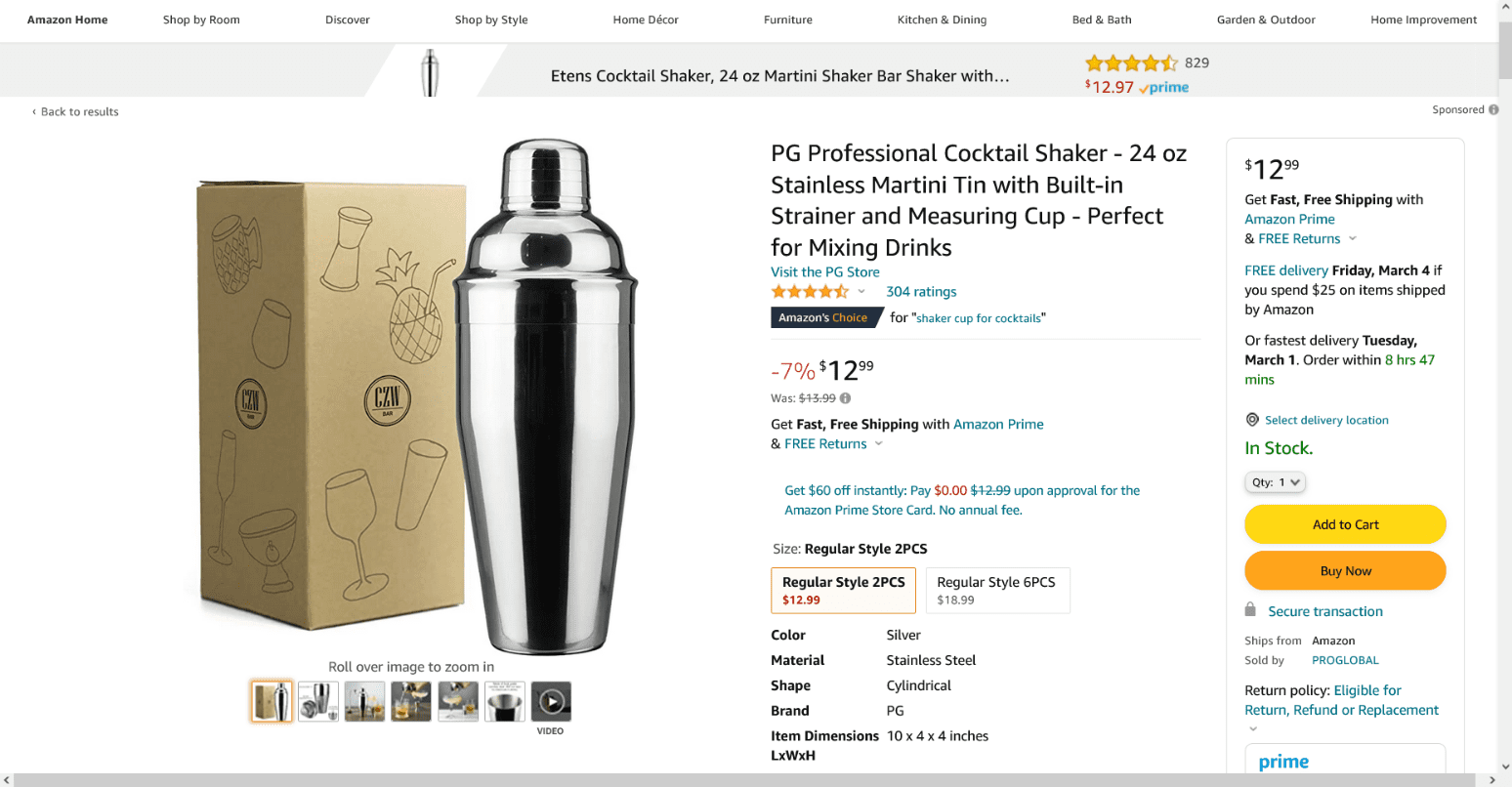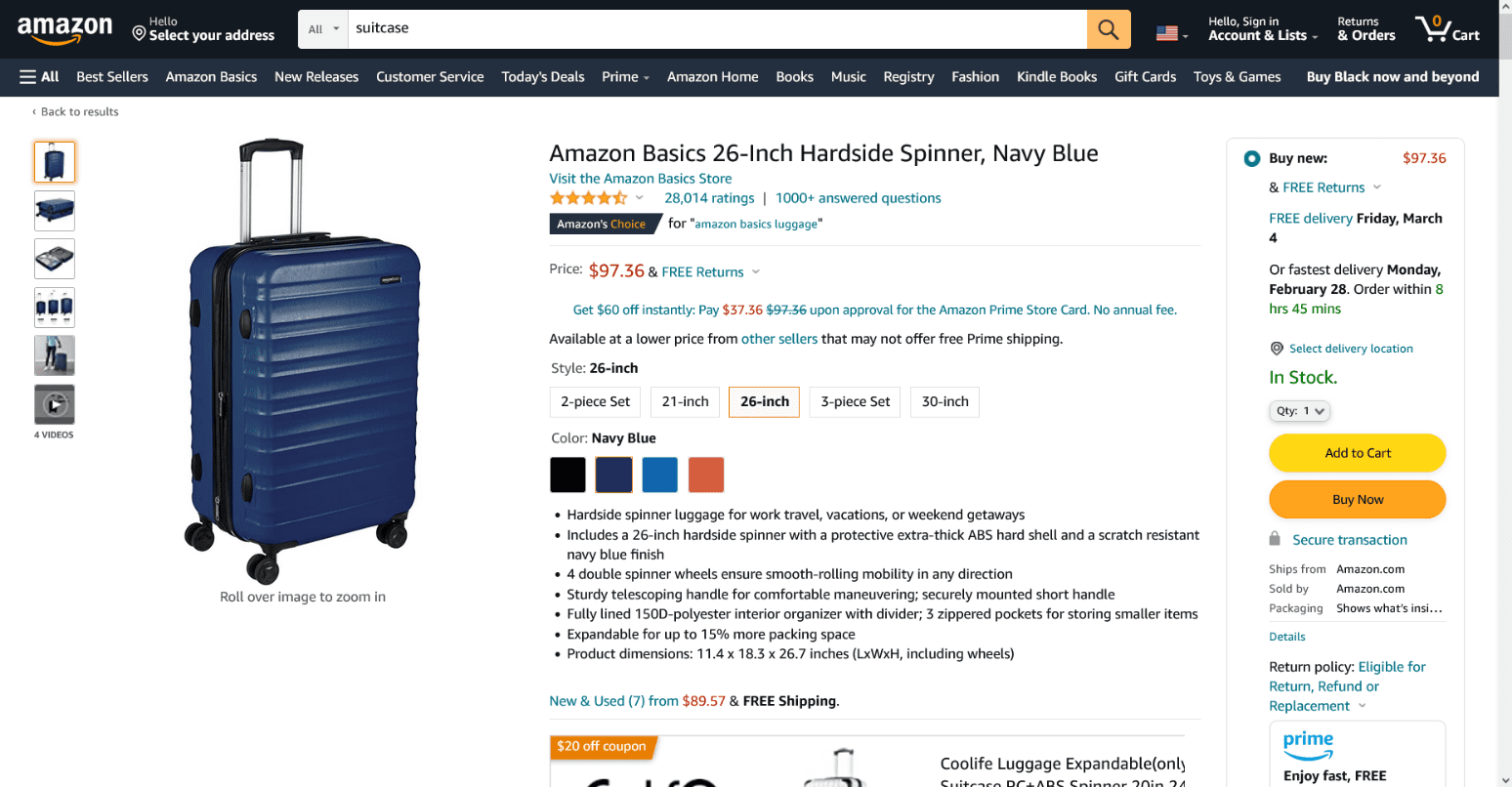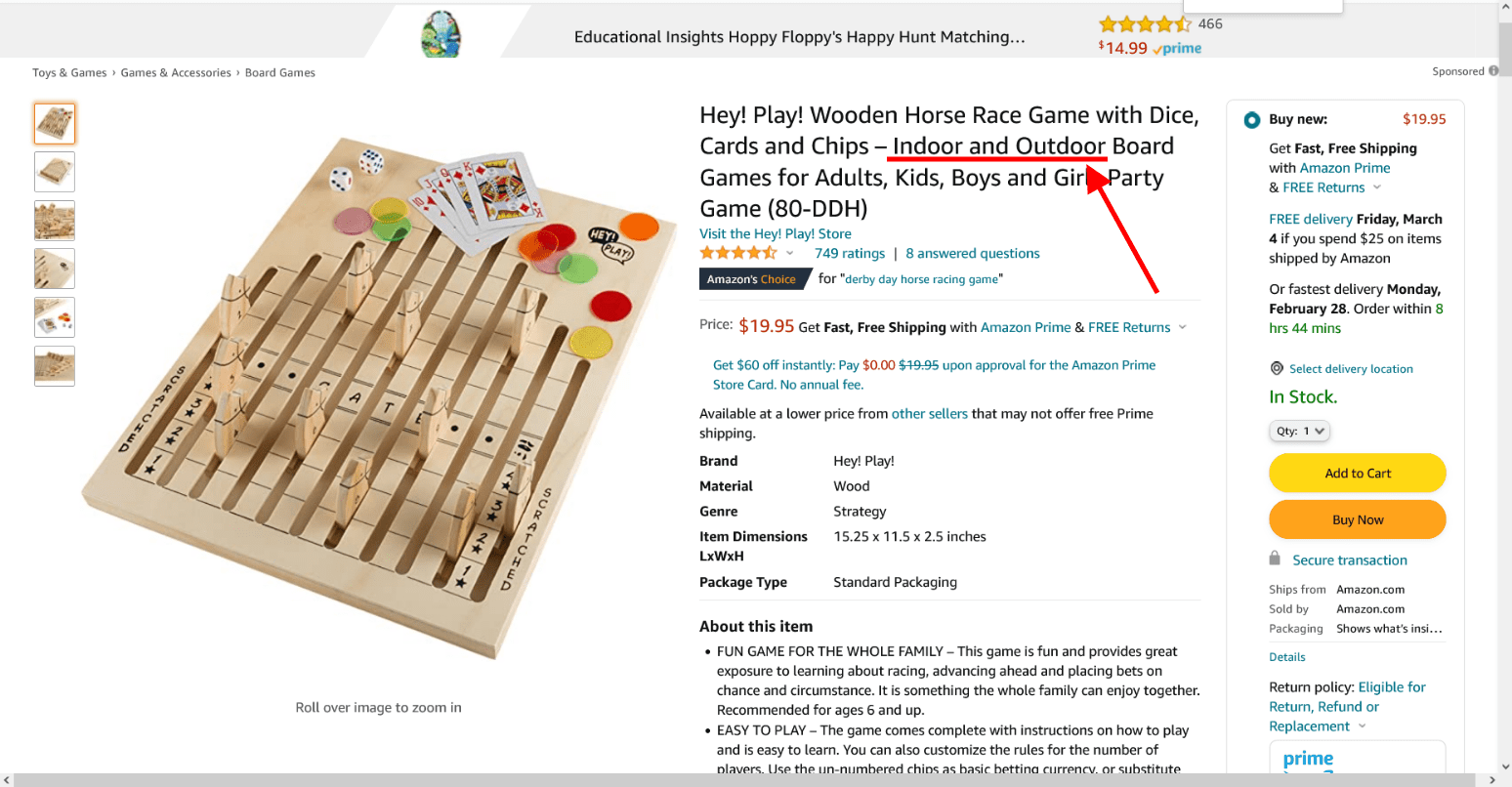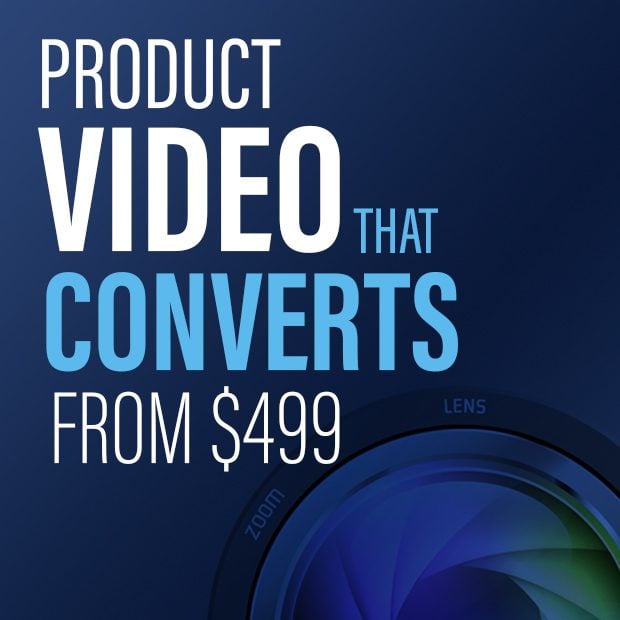Amazon Product Titles: Optimizing Your Listing Title for Clicks and Conversions

When you’re selling on a marketplace like Amazon, one of your main goals is to stand out. In trying to stand out, it’s helpful to reverse engineer the properties that make the biggest impact.
For example, a browsing shopper will see your main product photo before they see the photos in your A+ Content on your listing; thus, it’s more important to focus on your main product photo.
Going further, you’d want to consider the variable that precedes your product photo. That would be your product title.
Your product title contains the words customers see below your main product photo on search results pages. And those same words are what Amazon uses to index your listing within the search results.
In today’s article, we’re going to cover the best practices for creating a product title that gets you clicks, and ultimately, conversions.
Amazon Product Title Overview
The main purpose of the Amazon product title is search engine optimization (SEO) and communicating value.
To remove confusion and help shoppers have a better shopping experience, Amazon has a few guidelines for product titles.
Product Identifying Information
Amazon says your product title must include “product identifying information.” This means that you don’t want your title filled with generic or categorical terms that don’t tell the shopper exactly what your product is.
For example, for a cocktail shaker product, you wouldn’t create a title that says, “Make Cocktails At Home – Stainless Steel Kitchen Accessories.”
Instead, you’d start with the product and then include other related information: “Cocktail Shaker, 24 oz – Make Cocktails At Home – Stainless Steel Kitchen Accessories.”
Subjective Phrase
You want to keep your title strictly factual. To do so, avoid phrases like “Best [Insert Product]” or “The Ultimate [Insert Product]”
Promotional Phrases
You want to keep your title evergreen. Amazon guidelines say to avoid phrases like “Free Shipping” or “Satisfaction Guaranteed.” These statements don’t directly relate to your product and are things that can easily change.
Decorative Symbols
Amazon says to avoid decorative symbols, including ~ ! * $ ? _ ~ { } # < > | * ; ^ ¬ ¦. To separate phrases in your title, use hyphens, forward slashes, and commas.
Some other tips that Amazon provides are:
-
Titles should be concise (fewer than 80 characters are recommended)
-
Avoid all caps.
-
Capitalize the first letter of each word except for prepositions (in, on, over, with), conjunctions (and, or, for), or articles (the, a, an).
-
Use numerals: “2” instead of “two”.
-
Don’t use non-language ASCII characters such as Æ, ©, or ®.
-
Titles can abbreviate measurements, such as “cm”, “oz”, “in”, and “kg”.
-
Don’t include your merchant name in titles.
-
Size and color variations should be included in titles for child ASINs, not the main title.
Product Title Best Practice #1 – Keywords
As a marketplace, filled with thousands of products, keywords are a major part of how the Amazon website works. Keywords are used in various places on Amazon.
As a seller, it’s your job to be strategic with your keyword choice. Ideally, you’d want to use a keyword research tool to identify keywords that are relevant to your product. Some keywords have higher search volumes and some have lower search volumes.
The higher search volume keywords tend to be more long-term plays. You likely won’t rank for them right away, because there have been other listings who’ve gained sales and reviews for that keywords—and thus, have more authority. But, when you first launch, the smaller search volume keywords are easier to rank for.
Keywords can go in various places, including in the metadata when you’re creating your listing, your bullet points, product description, and your product title.
Each area holds a different weight/influence on how it affects your ranking. While Amazon doesn’t say for sure, your product title keywords appear to have the most influence on how you rank.
With this insight in mind, you want to strategically use keywords in your product title so that Amazon’s algorithm knows your product listing is relevant to shoppers who search for those keywords.
According to Amazon’s research, a product title doesn’t need to contain the keyword the customer searched for in order to get them to click. So don’t worry about including all the keyword variations of your product.
The main things to keep in mind when it comes to product title keywords are, one, start your title with your main keyword—because your main keyword is usually going to be the one with the highest search volume. And, two, don’t repeat words unless necessary; Amazon indexes all the words and can rearrange them to make sense.
Product Title Best Practice #2 – Differentiation
The second best practice for your product title is differentiation. You must communicate your product’s value if you want to get traffic to your listing.
This goes back to avoiding generic phrases and including what Amazon calls “product identifying information.” Remember, you only have so much room and you need to fit both keywords and differentiating phrases.
There are numerous ways to differentiate your product. Here are several:
Size
Depending on your product type, including the size in your product title can help you get more traffic to your listing.
Products in which size would be important are things like furniture, clothing, and food containers. So, if your target audience searches for your product based on size, include it toward the front of your title.
If the size is a less important variable, you can include it at the end of your product title or leave it out altogether.
Color
For some products, color is very important. This is especially true for furniture and wearable items. If color is a variable that customers consider when shopping for your product, include the color of your product in your title. Sometimes color alone can be what makes a customer choose your product over another.
Use Case
The location that a customer might use your product and the purpose they might use it for can be great things to include in your product title.
Here are a series of questions you might ask yourself:
-
Can you use my product indoors, outdoors, or both?
-
Is my product for men, women, or both?
-
Is my product specific to any holiday?
-
Is my product dishwasher safe?
Differentiating information can go anywhere in your product title.
The character count for your product title can vary across categories. The most common character limit is 200 characters. You can place this differentiating information anywhere in your product title.
Now, keep in mind, you won’t see all the characters on the search results page, and this is especially true for mobile—you only see about the first 80 characters.
With this in mind, you should put the most important differentiators in the first 80 characters.
In general, Amazon recommends you keep your title to 80 characters. They say that longer titles are harder to read and increase your risk of losing the shoppers’ attention. We recommend you use all the characters available to you, but so strategically.
Regardless of how many characters you can have in your product title, you want to put the variables that are most often considered toward the front of your product title so that shoppers can identify if your product is for them no matter which device they use to shop.
Wrapping Up
When you’re creating your product title, you want to focus on including both relevant search terms but also differentiation. The two go hand-in-hand.
The keywords are for the sake of searchability and ranking, while the differentiation is for the sake of the shopper.
Shoppers need to know that your product is for them. Set aside some time to go over your product titles and evaluate them for the two best practices we discussed in this article.
Happy Selling,
The Page.One Team
The Last Word:
It’s important to note that Amazon guidelines for titles aren’t strictly enforced, but they are stated in Amazon’s product title requirements. Amazon warns that if you don’t comply, you can get your listing suppressed.

